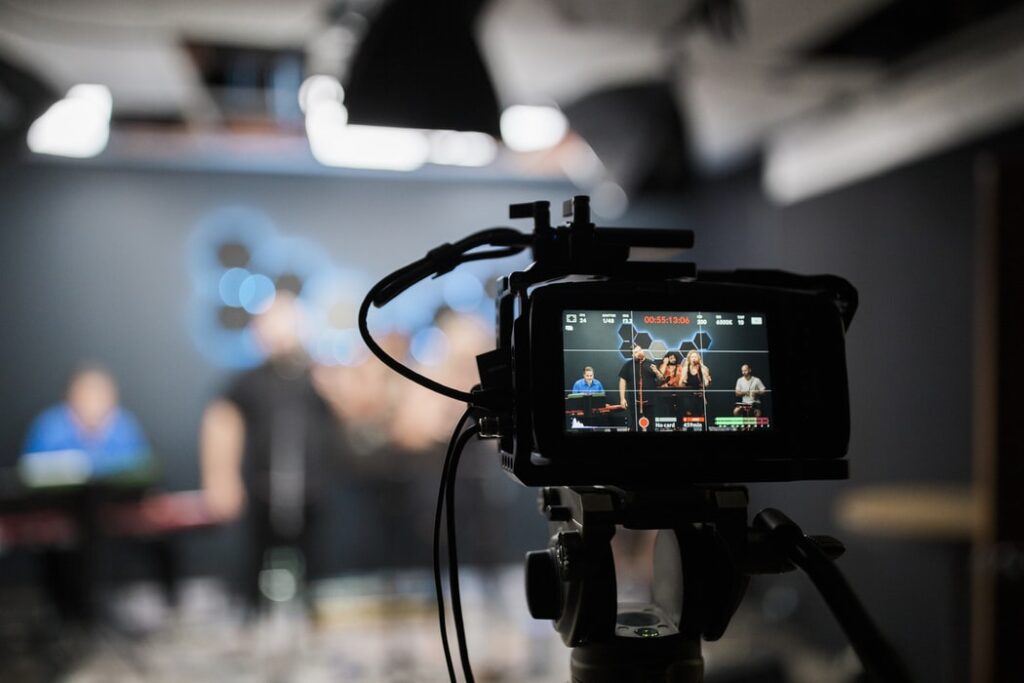2020 provided much food for thought for companies with new products to launch. With exhibitions and customer events postponed, the challenge became how to promote new products to audiences without being face-to-face with journalists and prospects. For some, it was a case of delaying launches to 2021, while others took a leap into the untested waters of virtual launches.
Impactful…but in the right way?
After being invited to a few virtual product launches myself last year, I was intrigued to see how brands would promote and produce them. Digital marketing, PR and social media were all key to generating interest and anticipation. Event registration links made data capture simple. And with no travel complications, showing up was the easy part.
So, how is the virtual product launch experience for me? You click on the link at the appointed time to find a live stream (or in some cases, a pre-recording, or ‘simulive’ alternative). What jumps out first is the virtual event branding – dramatic music, swooshing artwork and perhaps a charismatic voiceover introducing me to the company.
In some cases, a studio – almost news-like – appears with a few spokespeople to discuss the product and the context for the launch. Cut to a product manager next to a shiny machine in all its glory. Then an enthusiastic walk-through of the key features and maybe some finished product samples shown to camera. Usually followed by a brief Q&A, with questions from viewers put to key stakeholders. After 40 to 50 mins, the stream ends and a friendly email follows, thanking me for attending and telling me to contact ‘X’ or ‘click here’ for further information.
Having joined several events following a variation on this format, it became clear that some elements made for a stand-out experience; fluid production, high quality video work, professional scripting, well-rehearsed delivery and good question handling.
And the virtual experience had many things to recommend it. Focusing on the screen meant there were few distractions. Branding was boldly and professionally delivered. Getting more information was simple.
But, with nothing to physically take away and no-one to engage with face-to-face, I question whether these online interactions were as impactful or rewarding as the tried-and-tested real world alternatives. I felt the journey as a would-be customer ended quite abruptly and I questioned whether another couple of follow-up emails would honestly motivate a prospect to take the next step.
For any brand, the chance to present a new product in front of a physical crowd is unmissable. Making eye-contact with engaged audience members, sharing physical samples, engaging in face-to-face chat just moments afterwards with an interested prospect. These personal touchpoints leave a more lasting impression than the virtual alternative.
The physical unveiling of a new product, the sight and sound have an emotional impact. Seeing a product up close gives an unparalleled sense of size, scale and quality. The body language and personality of a salesperson can bring the product to life and make the difference between a follow-up call and a disregarded email. A sample that can be touched and scrutinised there and then, as opposed to through a camera, provides the ‘wow’ factor.
My colleague Shireen touched on a similar subject in a blog she wrote last year – the overall buyer experience is not just based on the impression of the product itself, but the overall feeling they get – begging the question, how can virtual have the impact that good face-to-face, physical experiences manage so effortlessly?
No right or wrong way…yet
There’s no doubt that virtual launches have their place, and with much uncertainty for at least the first half of this year, they’re here to stay. Those brands who pushed back a year will need to rethink their plans. Holding off any longer may not be an option. Companies need to learn fast how to make these launches effective in the post-COVID era.
By now there are plenty of benchmarks, and opportunities to research the dos and don’ts. Consider taking advice from those who have already taken the plunge. Perhaps engage directly with customers and gather their thoughts on the prospect of further virtual demonstrations. And if you’ve already ‘gone virtual’, take time to look at customer feedback and apply the learnings to the next ‘v-event’.
At this point it’s still hard to predict when trade exhibitions will return, but a year of virtual interactions has certainly given me a newfound appreciation for physically being at our industries’ major events, and the networking and relationship-building they provide. But alongside them, I hope brands and their agencies continue to build on what we’ve quickly learned is possible in a virtual world. Done right, each will have its place in the product marketing mix moving forward.
Other content that may be of interest:
https://adcomms.co.uk/ad-info-hub/expanding-the-product-engagement-toolbox
https://adcomms.co.uk/portfolio/a-fresh-approach-launching-a-new-product-virtually
